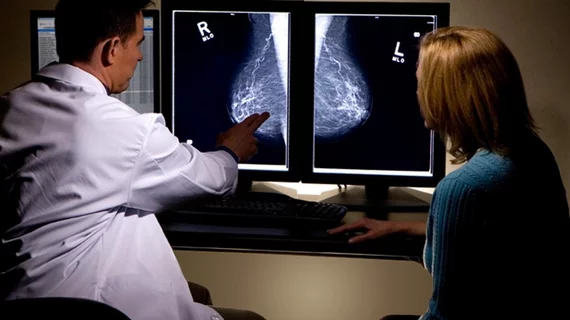Age and workload affect reader performance for screening mammograms
As the prevalence of breast imaging continues to grow, so too will the modality’s associated workload. This notion recently prompted experts to question whether all radiologists are equipped to handle the intricacies of interpreting breast imaging.
According to a meta-analysis conducted by experts at the University of Sydney, there is no single, smoking gun radiologist quality that separates them from the pack when it comes to their accuracy for interpreting screening mammograms. However, age, specialty training and reading volume were found to give readers an edge over their peers according to certain metrics [1].
The meta-analysis reviewed data from 28 other published studies. Its findings were shared on Jan. 26 in Clinical Breast Cancer.
Detailed insight from the study is as follows:
Older radiologists record lower false positive rates.
Radiologists with consistently higher reading volumes achieve increased sensitivity, cancer detection rates, lower recall rates and lower false positive rates.
Breast specialists typically have better cancer detection rates (CDR), sensitivity and specificity. Those who complete breast imaging fellowship record lower recall rates and improved positive predictive value compared to those who do not.
Reader gender was not found to significantly affect performance.
Limited data was available to assess how years of experience and facility-level characteristics impact performance.
"The evidence... shows mixed findings for the association between reader characteristics and screening performance," the study’s corresponding author Ernest Ekpo, with the Medical Image Optimization and Perception Group (MIOPeG), and colleagues noted.
The authors suggested that future work should focus on these characteristics alongside facility and patient-level metrics to better inform interventions that could improve radiologist performance for screening mammograms.
The study abstract is available here.

